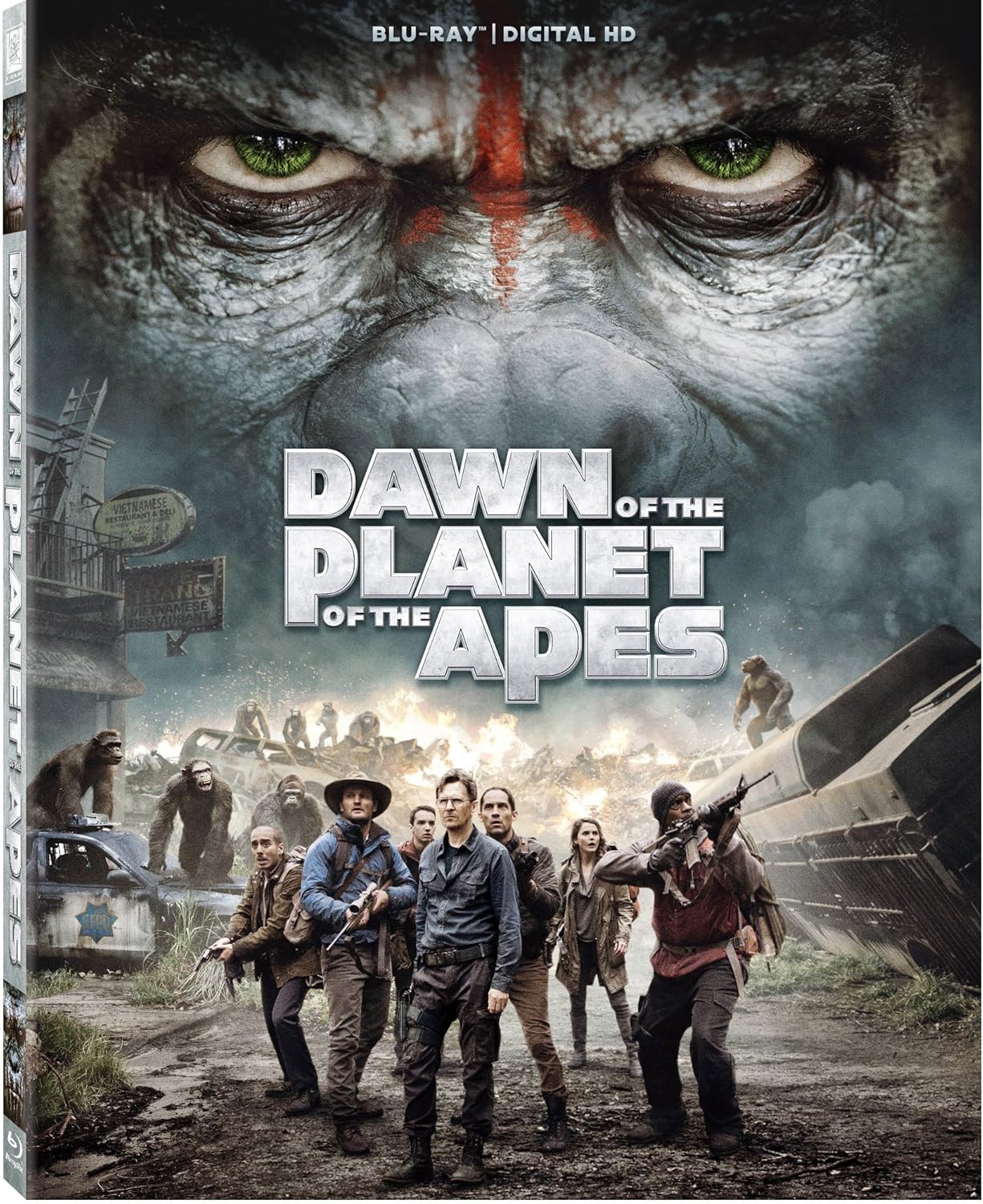
Back when Rise of the Planet of the Apes (or as I called it, Rise o' da World o' da Monkees) came out in 2011, I thought it was a better-than-expected reboot of the franchise powered by the performance captured performances of Andy Serkis and company driving Weta's realistic CGI monkeys which managed to gloss over the somewhat trite story and poor human casting. (Whomever thought James Franco would make a plausible scientist needs to go sit on the Group W bench with the person who though Liv Tyler would be a plausible doctor in The Incredible Hulk.)
Flaws aside, it made money so Hollywood did what Hollywood does when it sees the opportunity to milk a cash cow, it unsurprisingly made a sequel, San Francisco Monkey Planet, er, Dawn of the Planet of the Apes, but the real surprise is how the story makes as big a leap forward as the visual effects do. In a year where Transformers: Marky Mark Goes To China Edition managed to dumb-down the already brain dead fighting robot series, it was refreshing to see what could easily have been a one-sided "Apes GOOD! Humans BAD!" movie attempt complexity and subtlety while still delivering the money shot of a monkey on horseback dual-wielding machine guns.
It's 10 years after the events of Rise and as the pre-title montage explains, the human race has pretty much been killed off by the "simian flu" - aka the chemical that gave Caesar (Andy Serkis) and his pals advanced intelligence. The apes are living in the forests north of San Francisco and have built a community where they're teaching language and minding their own business. Of course, a damn dirty human (Kirk Acevedo) manages to screw things up when he encounters a couple of young chimps and shoots and wounds one of them.
Seems the humans, led by Jason Clark (the interrogator from Zero Dark Thirty, soon to be the next John Connor in Terminator Genisys), were in the neighborhood looking to start up a hydroelectric dam to get power flowing back the the human survivors encamped in the city. They've been using generators to keep the lights on, but fuel is running out and within a couple of weeks, they'll literally be back in the dark ages. Caesar orders the humans out of his woods, never to return, and then scram. Concerned that they may not take the hint, he saddles up the horses and leads a large group down into the city to make it clear to Clark that he means business and to stay away or it could lead to war.
The community's leader (Gary Oldman) is worried about the electricity running out and is prepared to arm up and go kill the apes, but allows Clark a few days to go back up and see if he can reason with Caesar to allow them to get the dam running, which he reluctantly agrees to. The humans and apes appear able to coexist, but naturally stupid human manages to botch things up badly and it all goes to hell.
What is unexpected, though, is that while there is some provocative action on the human side, there is some heavy palace intrigue happening in Apeville as Caesar's trusted lieutenant, Koba (Toby Kebbell, who is the new Doctor Doom in the Fantastic Four reboot), who was abused by medical testing in the lab, feels Caesar is too sympathetic to the humans because he was raised by one and wants to take a more aggressive tack with dealing with the human threat. (Read: Kill 'em all.) More monkeyshines ensue.
What Dawn of the Planet of the Apes does that's so unexpected is to provide shaded motivations for both sides of the man-ape divide. While there are a few obvious tropey moments of human dumbassery (mostly Acevedo's one-note jerk), it doesn't go for the lazy, cheap Dances With Wolves stance that white people, er, humans ruin everything in nature. Here, the apes can be just as intolerant a-holes as the humans typically are. Both sides just want to survive and Dawn is sympathetic to the humans' needs in a way Avatar couldn't be bothered to. Just as Magneto wasn't totally unjustified in his perspective, Koba's malice is understandable even as his methods cross the line.
While Dawn's human cast and story is superior to Rise's thin tale and caricatures, the real stars again are Serkis and Weta's stunningly realized apes. It's hard to believe the same ones and zeroes that made the hard, flat polygonal images of Tron were used to make a living, breathing army of monkeys who are rained on, muddy, bloody, scarred and weathered. Every so often a shot will look a little shiny, but 99% of the time you won't believe you're looking at a totally fake animal. The expressiveness of the performance capture is translated seamlessly; you feel what they feel.
Director Matt Reeves (Cloverfield, Let Me In) takes over the director's chair and delivers the goods with clearly shot action sequences and good character beats. The production design is also a standout as the overgrown post-human world is richly rendered. Of course, Weta delivers the goods on the VFX side.
Technically, the Blu-ray looks wonderful with a rich, colorful, clear image and good sound reproduction. On the extras side, I haven't listened to the commentary track from Reeves, but the featurettes are pretty good with a good look at the technical details and challenges of obtaining performance capture in the woods of Vancouver in the rain with 3D cameras to turning a parking lot into the apes home and downtown New Orleans into San Francisco. (It could've been nerdier, but I'm always wanting more techy stuff.)
One quibble: Shouldn't the first movie have been Dawn with the second being Rise? Just makes more sense that way, amirite?
Score: 9/10. Buy it.







0 comments:
Post a Comment